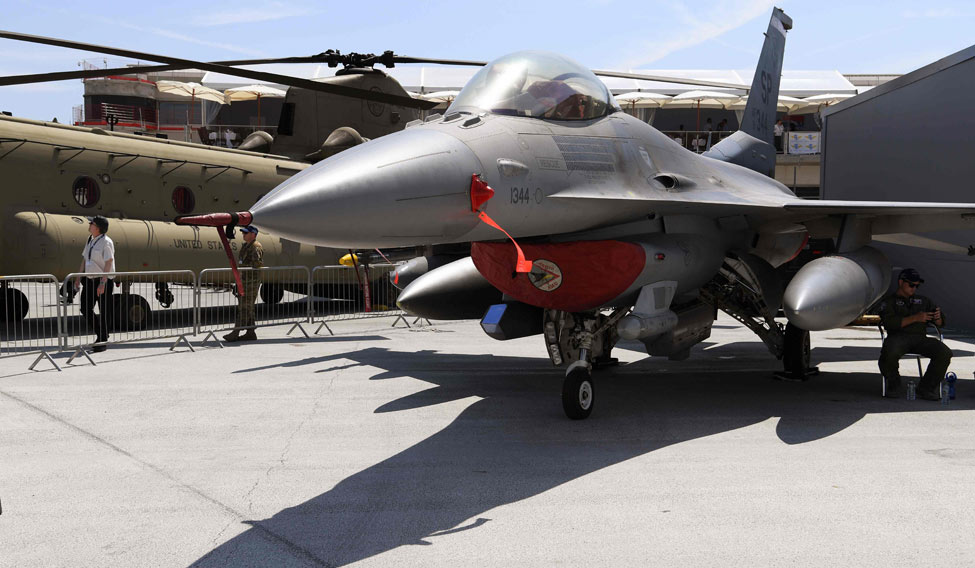The Centre's Make in India plans got a big boost this week, with the US aerospace giant Lockheed Martin striking a deal with the Tata Group to make F-16 fighter jets in India. Many have termed it as an “unprecedented deal” where the US firm will move the assembling of the fighter jets to India.
However, there is no surety yet on when the planes will be made, let alone take-off from India.
Lockheed Martin told THE WEEK the deal is only an intention to make F-16s in India and a final decision will depend on the discussions between the respective governments and if India decides to buy F-16 fighter jets for the Indian Air Force.
“We signed a letter of intent with Tata Advanced Systems Limited to work together on F-16 production in India. This does not represent a decision by either the Government of India or the US Government. The Indian government is still determining its requirements and government-to-government discussions are ongoing between India and the US,” the company said.
Lockheed Martin already has a partnership with Tata Advanced Systems. The two companies had inked a joint venture in 2011 and it manufactures aerostructures for Lockheed Martin's C-130 military transport aircraft.
N. Chandrasekaran, chairman, Tata Sons said, “This agreement (for making F-16s) builds on the already established joint venture between Lockheed Martin and Tata and underscores the relationship and commitment between the two companies.”
However, for Lockheed Martin, the deal will only make sense if it wins the contract from India to supply the fighter jets.
When specifically asked if it would be open to shift its assembly line in India and make planes for export, even if there were no orders from India, it said, “Our focus remains on supporting Make in India and F-16 Block 70 aircraft for the Indian Air Force.”
Indian Air Force has 32 fighter squadrons, while the need is for 42 squadrons. India is looking to replace its ageing fleet of Mig-21 and Mig-29 fighter jets. But, F-16 is not the only option on the table.
Sweden's Saab is also in the race. It has offered the Gripen E fighter jets to India and said in the past that it will not only manufacture in India, but also build an entire fighter technology ecosystem here.
India had earlier sought 126 medium multi-role combat aircrafts. France's Rafale was shortlisted, but due to various issues, including delays and costs, only 36 Rafale jets were bought from Dassault Aviation in fly away condition.
Dassault CEO Eric Trappier had said in an interview to PTI last year that it too was open to manufacturing the fighter aircraft in India if it was shortlisted for a bigger order.
So, there is clearly competition for Lockheed Martin and its F-16s. A past proposal by the US company for selling F-16s to India had been rejected.
Prime Minister Narendra Modi heads to the US later this month and this deal may even be discussed. If the deal does go through, it could create thousands of high skilled jobs in India. However, President Donald Trump has been stressing on companies to increase manufacturing and jobs back in the US. Therefore, getting the US government approval for this deal, may also be a hurdle.
The company said the US administration has been briefed on its proposal, including moving the production lines. However, the details will eventually depend on government-to-government discussions, it added.
“The President has been clear that his administration is focused on jobs, strengthening manufacturing, and increasing the competitiveness of the US economy. F-16 production in India supports thousands of Lockheed Martin and F-16 supplier jobs in the US and creates new jobs and other opportunities in India—a clear win-win for the US and India,” said Lockheed Martin.
Although the company is offering the F-16 Block 70 aircraft, the latest version of the fighter jet originally developed in the 1970s, the US is getting ready the successor of F-16, the F-35. Therefore, some have even criticised the plans to sell an older aircraft to India.
“Is India a dumping ground for obsolete weapon systems?” questioned defense expert Brahma Chellaney this week.
The company maintains that the plane offered is the most advanced version of the world's most successful, combat proven fighter aircraft.






